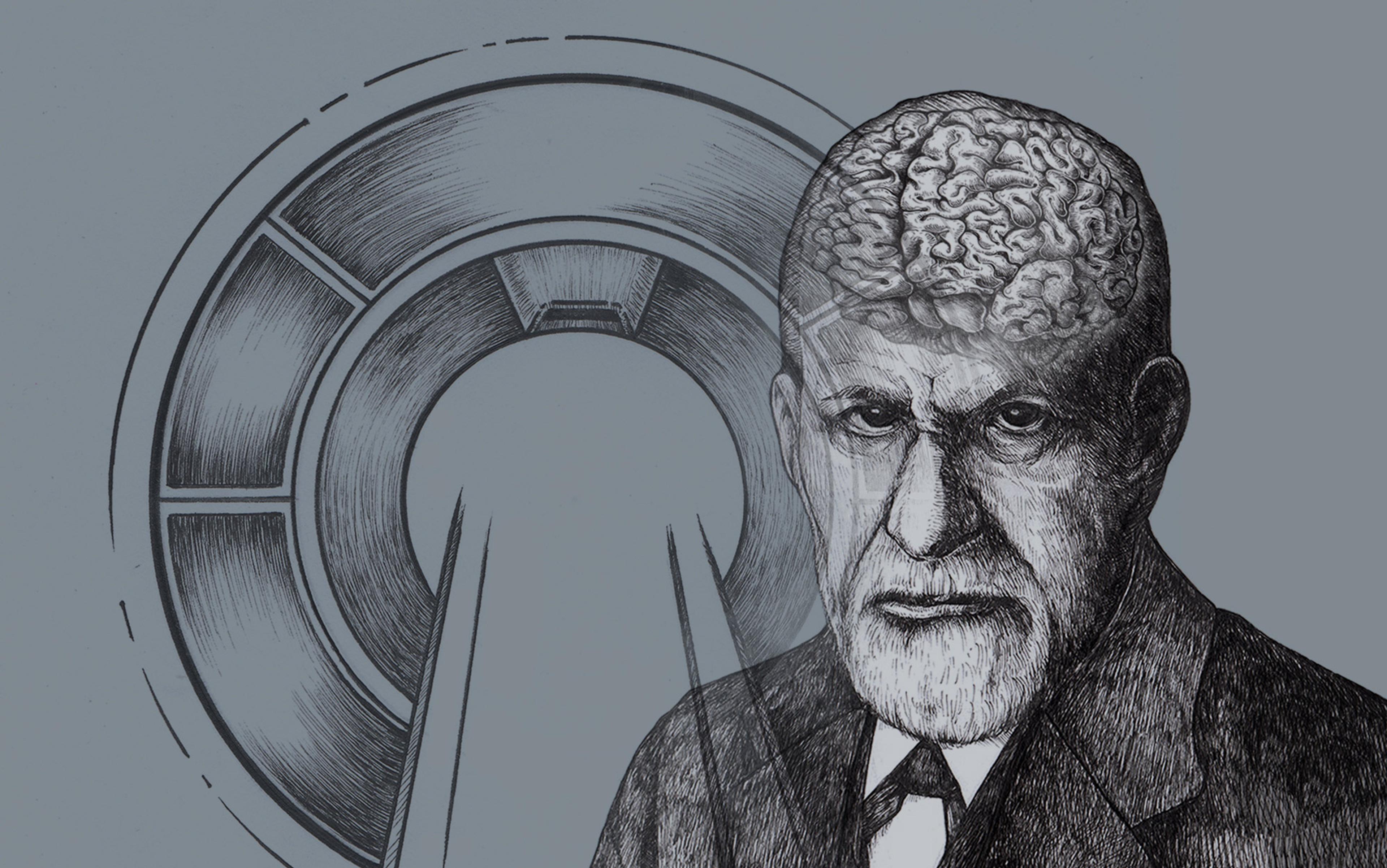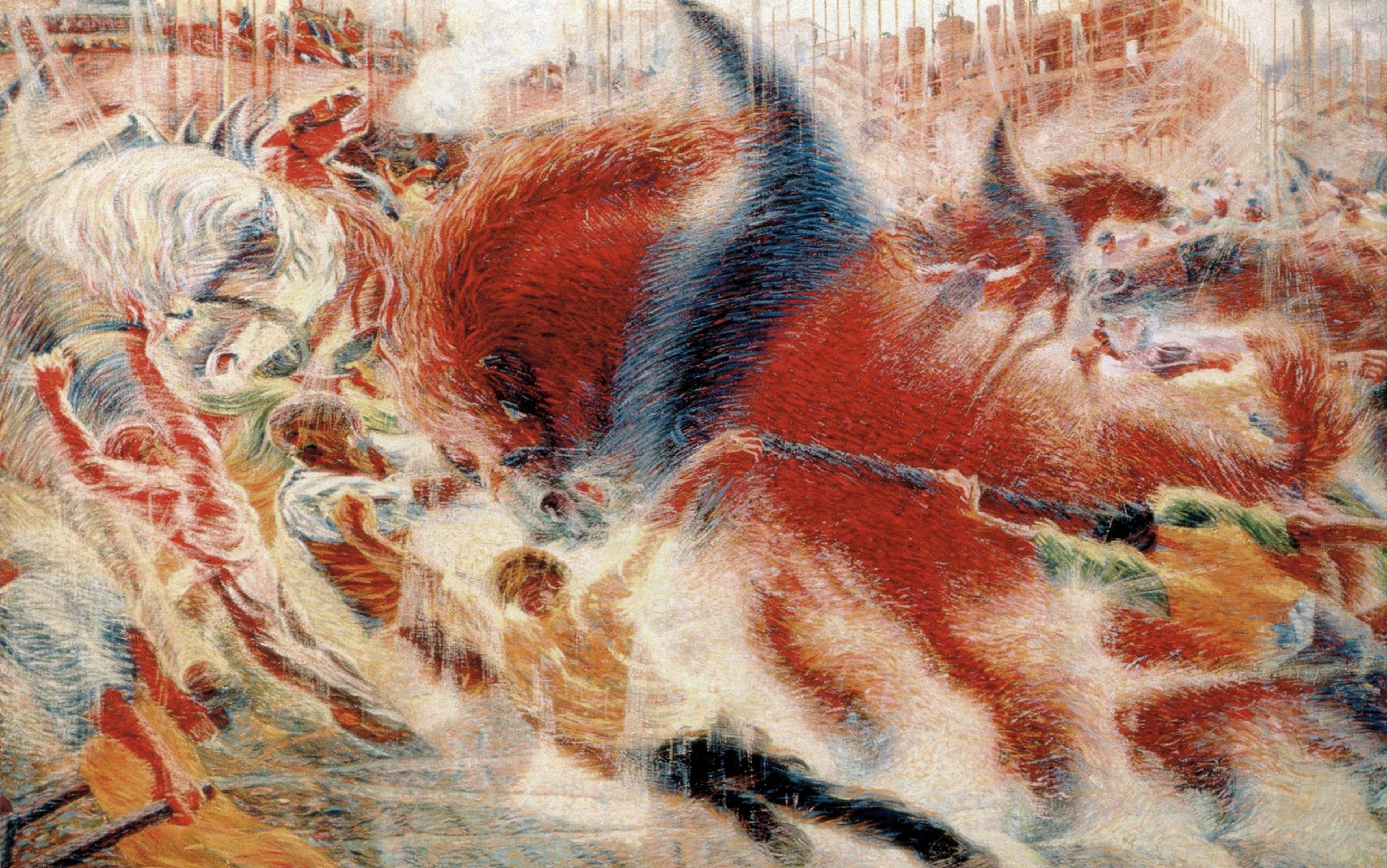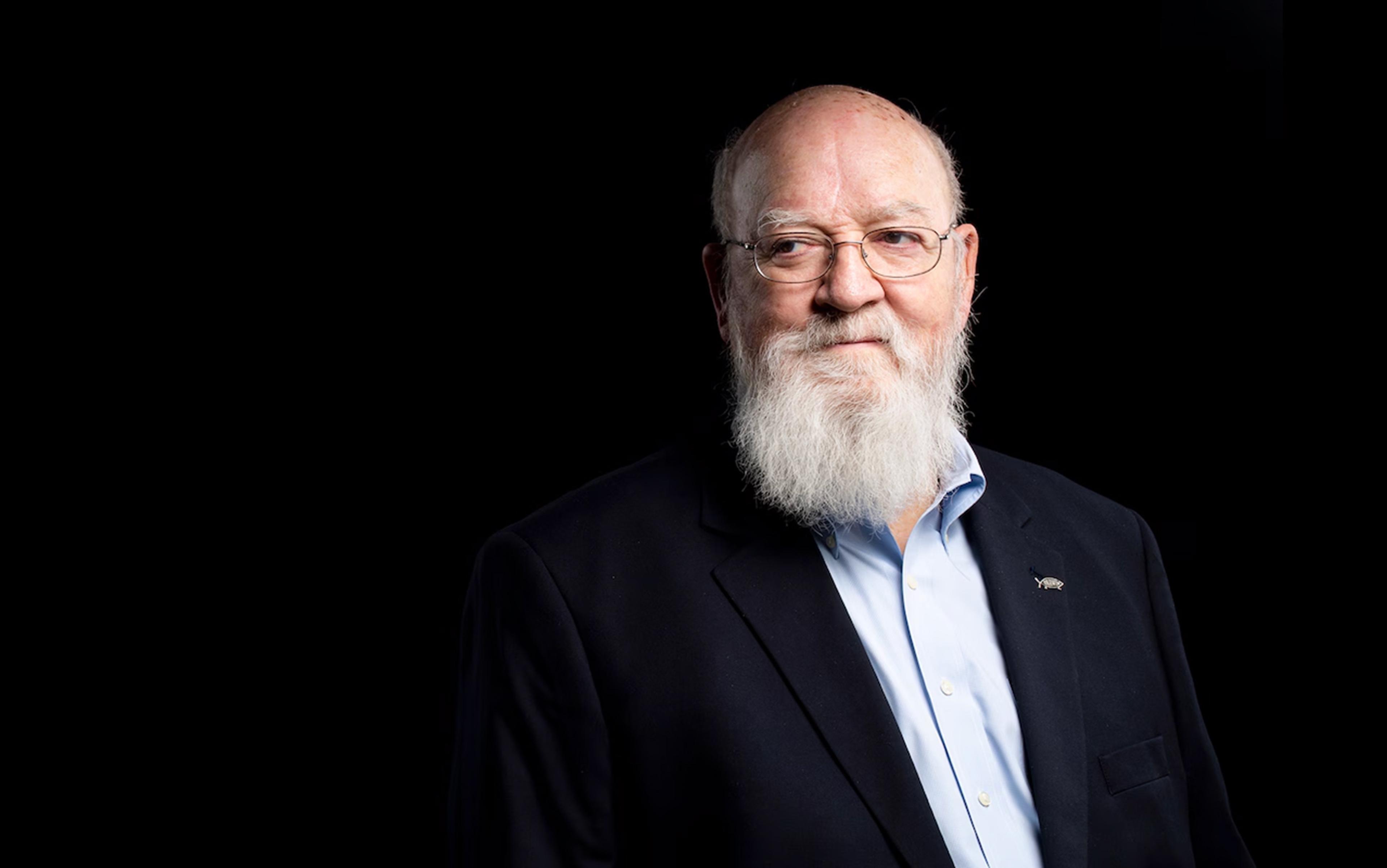Most people think of Sigmund Freud as a psychologist or a psychiatrist. But he was neither. He was trained as a neuroscientist and went on to create a new discipline that he called ‘psychoanalysis’. But Freud should also be thought of as a philosopher – and a deeply insightful and prescient one at that. As the philosopher of science Clark Glymour observed in 1991:
Freud’s writings contain a philosophy of mind, and indeed a philosophy of mind that addresses many of the issues about the mental that nowadays concern philosophers and ought to concern psychologists. Freud’s thinking about the issues in the philosophy of mind is better than much of what goes on in contemporary philosophy, and it is sometimes as good as the best …
In fact, it’s impossible to really understand Freudian theory without coming to grips with its philosophical undercurrents. This might sound strange, given the many derogatory remarks about philosophy that are scattered through Freud’s writings and correspondence. But these remarks are easy to misinterpret. Freud’s verbal barbs were not directed at philosophy per se. They were directed at the kind of philosophy that was dominant during his lifetime – philosophy of the speculative, armchair variety that remains aloof from scientific investigations of the material world, often described as ‘metaphysics’, a subject that he characterised as ‘a nuisance, an abuse of thinking’, adding: ‘I know well to what extent this way of thinking estranges me from German cultural life.’
To come to grips with the philosophical thrust of Freud’s thinking, it is crucial to place it in its historical context. Born in 1856 in a village in what is now the Czech Republic, Freud enrolled in the University of Vienna just at the time when the sciences of the mind were gaining momentum. Although he initially planned to study law with the intention of pursuing a career in politics, and also toyed with the idea of doing a joint PhD in zoology and philosophy, he eventually found his way to neurology. In entering this field at just that moment, the young Freud launched himself into an incredibly exhilarating and dynamic intellectual milieu. For neuroscientific researchers, the daunting scientific challenge of figuring out how the brain works (without the benefit of the sophisticated technologies available today) was compounded by the equally formidable philosophical challenge of explaining the relationship between the electrochemical impulses coursing through a massively complex network of neurons and the experiential fabric of our subjective mental lives – our thoughts, values, perceptions, and choices.
At around the same time that neuroscience was finding its feet, psychology was emerging as a new scientific discipline (prior to about 1879, psychology was considered to be part of philosophy). The early psychologists were also confronted with a deep philosophical problem, albeit a methodological one. How is it possible to investigate the human mind scientifically? Mental phenomena are by their very nature subjective, but science demands an objective stance towards what is being investigated. In light of this seeming contradiction, there was a real question about whether a science of the mind was even possible – which led some to exclude the psyche from psychology, and to redefine it as the scientific study of behaviour.
Unlike most scientists today, the neuroscientists and psychologists of that era understood that science is inevitably rife with philosophical assumptions. For the most part, they worked within a paradigm that they had inherited from the 17th-century polymath René Descartes. Two components of the Cartesian intellectual tradition were especially relevant to their work. One concerned the ‘mind-body problem’ – the problem of understanding the precise relation that holds between our mental states and our bodily states. The other concerned what might be called ‘the mind-mind problem’ – the problem of understanding how our minds are related to themselves. The first of these was primarily of interest to neuroscientists, while the second was mainly of interest to psychologists.
With regard to the first problem, 19th-century neuroscientists mostly took the view that minds and bodies are radically different kinds of things. Bodies are material things – flesh-and-blood machines that can be studied from a third-person perspective. But minds are immaterial things that can be accessed only from the ‘inside’, a view that was later ridiculed by the British philosopher Gilbert Ryle as the theory of ‘the ghost in the machine’. With regard to the second problem, psychologists had the view that minds are transparent to themselves – in other words, that the mind is entirely conscious. Each of us has direct access only to our own mental states, and we cannot be mistaken about those states. This implied that psychological research should proceed by means of introspection, which is why the first psychologists came to be known as ‘introspectionists’.
During the course of the 19th century, the Cartesian concept of mind-body dualism came under increasing pressure. Early on, the law of the conservation of energy – the principle that the quantity of energy in the physical universe remains constant – clashed with the notion that bodily movement is explained by a non-physical mind injecting energy into the physical world. The study of the aphasias, disorders of speech caused by lesions to the brain, showed that the mental faculty of language was intimately bound up with particular regions of the ball of nerve tissue between our ears. And Charles Darwin’s theory of evolution supported the idea that every aspect of human beings – including their mental capacities – evolved in response to physical selection pressures.
At roughly the same time, research into hypnosis was challenging the idea that the mind is transparent to itself. Hypnotic experiments demonstrated that a person could be placed in a trance and be given the instruction to perform some action upon awakening in response to a certain signal. For instance, the hypnotist might tell his subject that upon hearing the word ‘bluebird’ he would drop to the floor and crawl around on hands and knees. And sure enough, upon hearing the trigger, he would do just that. When asked why he was crawling on the floor, the subject would confabulate – saying, for instance, that he had lost a key and was trying to find it. Such experiments seemed to demonstrate not only that there can be unconscious ideas – thus refuting the belief that the mind is entirely conscious – but also that such ideas can have the power to shape behaviour.
These centres of consciousness were considered akin to separate persons inhabiting a single human brain
Scientists of the mind responded to this sort of challenge with two explanatory strategies, both based on the assumption that nothing that is mental can be unconscious, and nothing that is unconscious can be mental. Some granted that ostensibly unconscious mental states were indeed mental but insisted that they were not really unconscious. According to this view, a person’s consciousness can be split apart, resulting in a ‘main’ consciousness and one or more ‘sub’-consciousnesses, an approach that’s sometimes called dissociationism. These hypothetical centres of consciousness were considered to be something akin to separate and distinct persons inhabiting a single human brain, each of which has direct access only to its own mental states, but without access to the mental states of the others.
A second strategy was to accept that ostensibly unconscious mental states are genuinely unconscious, but to deny that they are mental. Advocates of this dispositionalist approach believed that the (non-physical) mind is distinct from the (physical) brain, and that only the brain processes behaviour. They believed that mental states accompany these physical processes, but denied that they make any contribution to human behaviour. So, in their view, the so-called unconscious mental states weren’t really mental at all. As the 19th-century neuroscientist Gustav Fechner put it: ‘Sensations, ideas, have, of course ceased to actually exist in the state of unconsciousness.’
Both of these theories were also harnessed to explain the puzzling phenomenology of mental illness. Consider the splitting of the mind associated with the mental disorder that was then known as hysteria. Many of those diagnosed as suffering from hysteria seemed to have multiple personalities, each of which was separate or ‘dissociated’ from the others. It was natural to explain this phenomenon as the splitting or fragmentation of a single self into several others. As the philosopher and psychologist William James put it in The Principles of Psychology (1890):
An hysterical woman abandons part of her consciousness because she is too weak nervously to hold it together. The abandoned part may meanwhile solidify into a secondary or subconscious self.
This ‘dispositionalist’ story was also deployed to throw light on psychiatric disorders. The fact that mentally ill people often engaged in compulsive behaviours that they could neither control nor understand could perhaps be explained by unconscious brain activity that is somehow cut off from the person’s mind. In cases of compulsive hand-washing, for instance, the sufferer seemed to be hostage to alien forces within himself that were not part of his consciousness, and therefore – according to the prevalent assumptions of the time – not mental at all.
As a young neurologist, Freud initially accepted the philosophical assumptions that were prevalent in his field. He thought of the mind as distinct from the brain, assumed that we are conscious of all of our mental states, and flirted with both dissociationist and dispositionalist approaches. However, in his day-to-day clinical practice, patients presented him with symptoms that were difficult to square with the Cartesian picture, and he had growing doubts about it.
Freud had several reasons for rejecting the ‘divided consciousness’ theory. The idea of ‘a consciousness of which its own possessor knows nothing’ seemed incoherent to him, and he also worried that this way of thinking allows one to ‘assume the existence not only of a second consciousness, but of a third, fourth, perhaps of an unlimited number of states of consciousness, all unknown to us and to one another’.
Freud’s critique of dispositionalism began with the observation that our mental life is not a smoothly flowing stream of consciousness. It is an interrupted stream that runs through tunnels and under bridges, disappearing on one side and reappearing on the other. ‘The data of consciousness,’ Freud wrote in ‘The Unconscious’ (1915), ‘have a very large number of gaps in them … Our most personal daily experience acquaints us with ideas that come into our head, we know not from where, and with intellectual conclusions arrived at, we do not know how.’
The most dramatic example of mental continuity across the gappiness of consciousness is the phenomenon of unconscious problem-solving. Let’s unpack this, using a vivid example described in a letter by the 19th-century German mathematician Johann Gauss. Gauss had been struggling for two years to prove a certain mathematical theorem, without success. Then, unexpectedly, the solution burst into his consciousness, seemingly out of nowhere:
Finally, two days ago, I succeeded not on account of my painful efforts, but by the grace of God. Like a sudden flash of lightning, the riddle happened to be solved. I myself cannot say what was the concluding thread which connected what I previously knew with what made my success possible.
Solving a difficult mathematical problem is obviously a mental process. It’s not something that you can do without thinking. So, the fact that Gauss arrived at a solution shows that he had been thinking about the problem, but he wasn’t thinking consciously about it, so he must have been thinking unconsciously about it.
It’s impossible to understand Freud’s theory of dreams, repression and psychopathology without first having grasped his account of the mind
It was such considerations that led Freud to a new vision of the human mind – a view that stood in stark contradiction to the orthodoxy of his day. He set it out in a remarkable document known as the Project for a Scientific Psychology (1895). Freud never published the Project – most likely because the neuroscience of the day couldn’t provide the sort of detailed information he needed. However, the ideas that Freud developed in it underpin almost all of his subsequent theorising. In fact, it’s impossible to really understand the Freudian picture of the mind – including his theory of dreams, repression, psychopathology, and even his views on religion and society – without first having grasped the outlines of the account of the mind presented in the Project. And it has also exercised a powerful influence – albeit a generally unrecognised one – outside the ever-shrinking bubble of Freud scholarship. The mathematical algorithm that enables artificial neural networks (computers that mimic the structure of the human brain) to learn from their mistakes was explicitly modelled on Freud’s theory of how brains learn.
From 1895 onwards, Freud uncompromisingly rejected the philosophical orthodoxy of his day – the twin assumptions of body-mind dualism and the equation of mentality with consciousness. In place of the former, he argued that our mental processes are processes within a physical organ – the human brain – rather than a non-physical mind. This physicalist stance was, although not entirely unheard of at the time, certainly bold and unusual. Freud also rejected the view that we can investigate the mind through introspection, because ‘it follows, from the postulate of consciousness providing neither complete nor trustworthy knowledge of the neuronal processes that these are … to be regarded as unconscious and are to be inferred like other natural things’.
If consciousness doesn’t give us a window into the mind’s inner working, then what is it? Freud used a procedure that present-day cognitive scientists call ‘functional decomposition’ to sketch out the architecture of the human mind. This procedure consists of looking at what a system does, and breaking down its activities into different kinds of tasks that are performed by different components of the system. Freud’s decomposition of the human mind suggested that cognition and consciousness are functionally distinct. In other words, the part of the mind-brain that’s responsible for thinking is not the same as the part that’s responsible for producing consciousness.
These considerations led Freud to what is perhaps the most misunderstood aspect of his theory of mind. Most descriptions of psychoanalytic theory claim that Freud held that there are two kinds of thinking: conscious thinking and unconscious thinking. Furthermore, psychologists often claim that they embrace a cognitive conception of the unconscious mind, in contrast to Freud’s view that the unconscious mind is chock-full of instinctual drives and emotions. However, both these claims are incorrect. Freud believed that all cognitive processes are unconscious. What we call ‘conscious thought’ is just the brain’s way of displaying the output of unconscious cognitive processing to itself. To use a familiar analogy, cognitive processes are like the central processor of a computer, and consciousness is like the monitor where the outputs from the processor are displayed. And as far as the psychologists’ claim about the ‘cognitive unconscious’ goes, Freud explicitly repudiated the idea that emotions and instinctual drives can be unconscious. In his view, all cognitive processes are unconscious, and all unconscious mental processes are cognitive.
The sketch of Freud’s conception of the architecture of the mind, and its implications for the science of psychology, are just two strands – albeit two very important ones – of the rich philosophical tapestry of his thinking. Whatever one might think of the particular empirical claims that Freud advanced – notions such as the Oedipus complex, the mechanisms of defence, and the theory of dreaming – there is another, relatively unrecognised, aspect of Freud’s thinking: a profoundly philosophical dimension that promises rich intellectual rewards to anyone who cares to pursue it.






